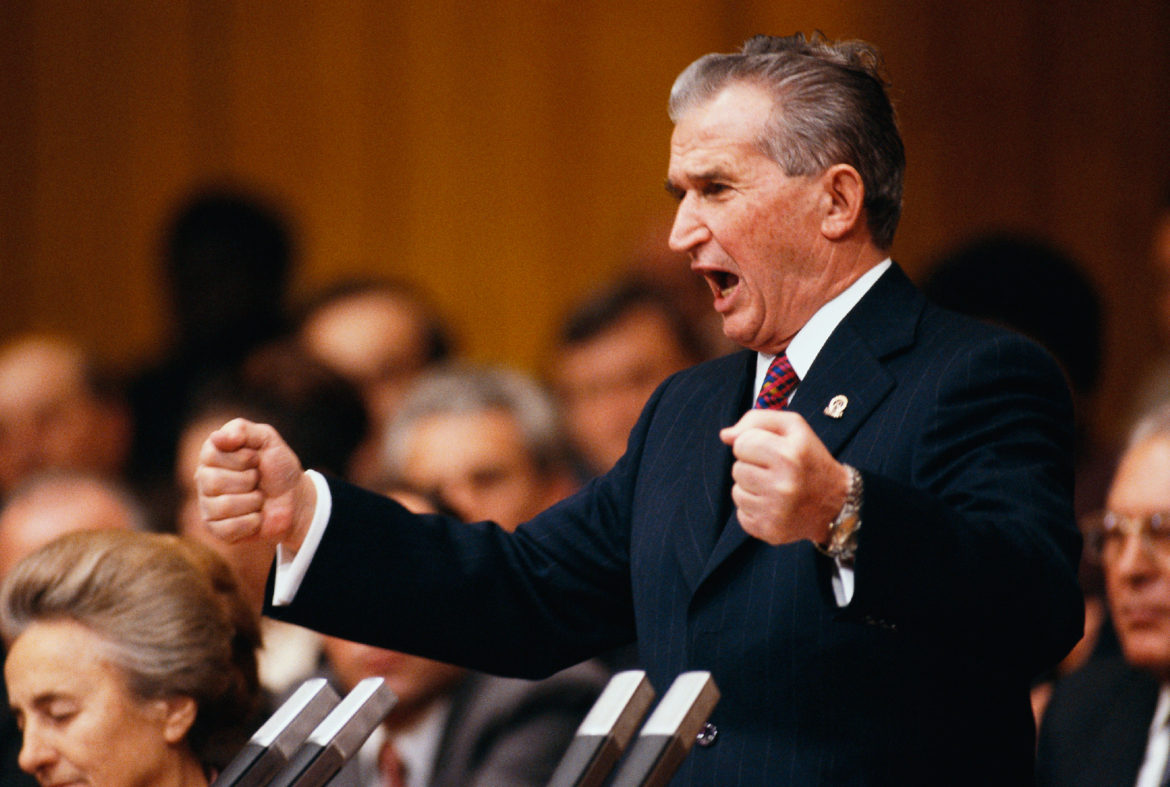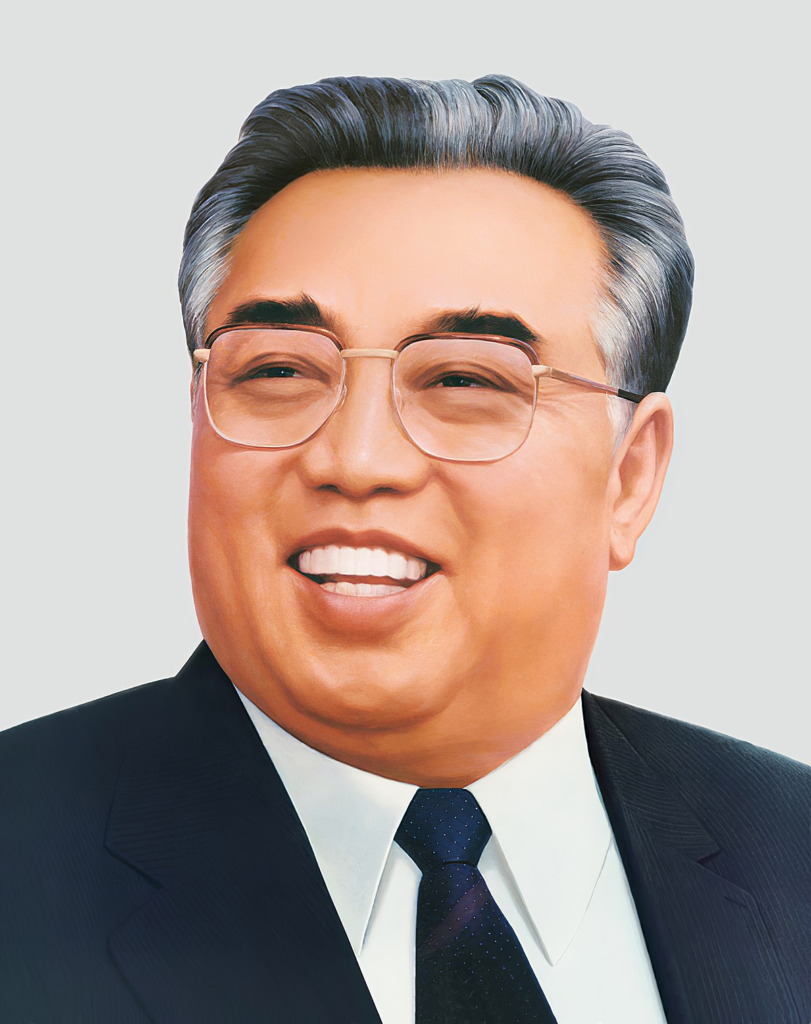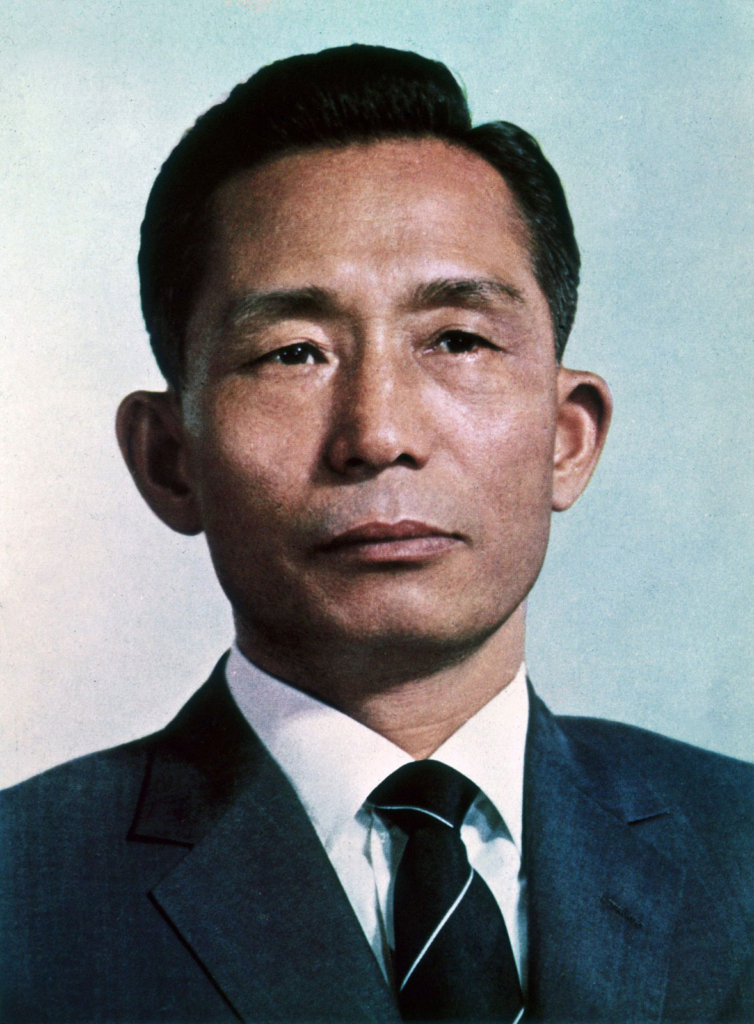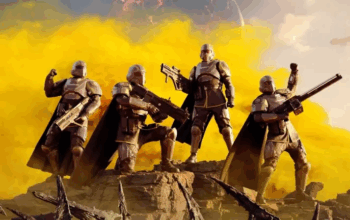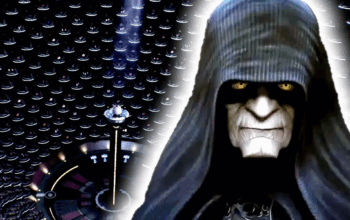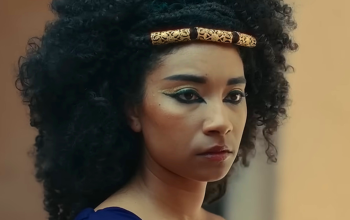The Cold War between the U.S.S.R. and the western powers shaped the entire back-half of the 20th century. While the Soviet Union would eventually die a slow and anticlimactic economic/political death in 1991, the echoes of this ideological conflict can still be heard well into the 21st century, as the western powers and the various flavors of communism alike would see dozens of governments deposed and dictators (quite often called “presidents”) installed across the globe.
This may seem like your standard listicle of “top” bad people, but our purpose here is not to off-handedly rank whose regime was the cruelest (many effects are still ongoing or being unearthed, and the politics involved would have us here all week). This list is based mostly around their legacy, eccentricity, and sheer incompetence. It’s one thing to cold-heartedly orchestrate the culling of your own population like far too many of history’s other infamously cruel leaders – it’s another thing entirely if the “greater good” of your regime under your leadership turns out to be an absolute failure.
Joseph Stalin – U.S.S.R. (1922-1952)
First, let’s get the most obvious mustache man out of the way – Joseph Vissarionovich Stalin. Having outlived Hitler for another 9 years, he was the man whose aggressive foreign policy set the stage for the Cold War with the west before the first nuclear bomb fell.
Stalin’s purges were legendary, even the ones that weren’t on purpose. In the lead-up to WWII, Stalin’s paranoia expanded to include even his own military, and thus removed all the top officers that were veterans of previous conflicts – leaving the U.S.S.R. vulnerable to Nazi Germany’s imminent invasion.
Even after WWII ended, Stalin continued to purge the U.S.S.R. of its new heroes. Georgy Zhukov, who commanded the Red Army all the way to Berlin, was demoted due to his “dangerous” popularity amongst the troops and populace of newly retired veterans. Alexey Kuznetsov, who defended Leningrad during the siege, was accused of conspiring to establish and anti-Soviet bloc in the city was executed in 1950. Numerous partisans and guerillas who resisted the German occupation were also questioned and interrogated after the war as Stalin believed their experience made them too independent.
Towards the end of his life, Stalin initiated yet another purge and forced relocation of the Jews, believing there was a Jewish doctor’s conspiracy against him. However, he died of a stroke before it could finish being carried out. In a weird twist of fate, this partially led to his own demise – as there were no qualified doctors left in Moscow during his most critical hours. For more on his farcical exit, we’d highly recommend watching the surprisingly accurate The Death of Stalin and History Buffs‘ review.
Stalin is at the start of this list because he laid the groundwork for the Cold War. But his more infamous crimes like the collectivization starvation of Ukraine and military purges happened earlier in his tenure. This article is focused exclusively on Cold War leaders whose crimes occurred during that period, all of which inevitably borrowed a bit from Stalin’s playbook.
“One death is a tragedy; a million deaths a statistic.”
– Joseph Stalin, 1947 (Oxford Reference)
Augusto Pinochet – Chile (1974 – 1990)
Augusto Pinochet was a right-wing dictator who, with the helping hand of the CIA, overthrew the democratically elected left-wing government of president Salvador Allende in 1973.
Pinochet was an example of how the fight against communism has been propping up dictatorships in 2nd world countries whether they came from the left or the right. In Pinochet’s case, his military junta banned all left wing parties, turned the national stadium into a detention center, and just generally “disappeared” most of his critics and adversaries, Stalin-style.
His legacy was his crackdown on fledgling drug cartels, causing a number to seek sanctuary in Columbia where they formed new cartels like the Medellin, making him indirectly responsible for the rise of Pablo Escobar and the narco traffickers that followed. This unfortunately starts something of a recurring pattern with modern Latin American dictators and drug cartels.
Francisco Franco – Spain (1939-1975)
Francisco Franco led the Nationalists to power during the Spanish Civil War in 1936-1939. In many ways, Franco was the “forgotten fascist” of WWII who would continue to slip under the radar during the Cold War. Upon taking power Franco sought to purge the left-wing government that had previously forced him into exile, putting in place an authoritarian regime openly modeled after the fascist ideology of Hitler and Mussolini. Franco would ultimately outlast his peers, as 3 years of civil war left Spain too battered and unstable to aid either side of WWII.
Despite their previous history of confronting fascism, Franco was welcomed by the western powers to confront communism. He would continue to rule Spain as dictator for 36 years until his death in 1975. During this time, he continued to indulge in his fascist roots, repressing ethnic minorities such as the Basque people in the Spanish northeast.
While Franco’s “White Terror” would formally end in 1945, “Francoism” would continue to see communists, homosexuals, and remnants of the old Republican government sent to military courts until 1964, with concentration camps open as late as 1947. Despite his militarized police committing many of the sins people quote under Hitler and Stalin, his repressive and regressionist rule never received much in the way of international attention simply because he didn’t pick a fight with the bigger powers, just as he did in WWII.
Franco effectively restored the Spanish monarchy to become king in all but name. Then, just like many other authoritarian upstarts before him, it all fell apart after his death, with Spain regaining a democratic constitution in 1978. The long-term effects of Franco’s little mix-up are still affecting Spain, with echoes of the era manifesting in aspects of the modern Catalan Independence Movement.
Mobutu Sese Seko – Congo / Zaire (1965 – 1997)
Mobutu Sese Seko (and his large collection of leopard hats) can be oversimply referred to as “the reason headlines containing the word ‘Congo’ are usually going to contain sad news”.
Mobutu came to power in 1965 by overthrowing the Congo’s first prime minister (Patrice Lumumba) with support of the CIA and the western powers – as they believed that the existing nationalist government was just a little too left-leaning. Then came 1971, and Mobutu declares that the country is now known as the “Republic of Zaire”, and that all the nation’s infrastructure and rich deposits of natural resources would be owned by his colleagues and personal friends. It was Mobutu’s rule that gave birth to the term ‘kleptocracy’ which is to describe a rule of official corruption that reputedly made him one of the world’s wealthiest heads of state.
Inspired by Mao’s “Cultural Revolution” in China (we’re getting to him too, don’t worry), Mobutu continued his country-wide purge of its colonial ancestry by renaming cities and encouraging citizens to adopt more traditionally African names. Wherever his own “Great Leap” encountered resistance, he responded by setting the template for sub-Saharan warlords to come – by telling his soldiers to “help themselves” to the land and its people, essentially becoming government-sponsored bandits. Naturally, men with free reign and machine guns will act as such, and social tensions along tribal lines would inflame.
Mobutu would eventually be ousted during the aftermath of the Rwandan Genocide with the start of the First Congo War. He died of cancer while exiled in 1997, and his successors have been fighting over the re-re-named Democratic Republic of the Congo [DRC] ever since.
François “Papa Doc” Duvalier – Haiti (1957 – 1971)
François Duvalier, known as colloquially as “Papa Doc” from his days of practicing medicine, was the President of Haiti from 1957 to 1971. One the few dictators to openly declare himself “President for Life”, he often held elections with only his name on the ballot.
Duvalier disbanded the army in favor of a paramilitary group known as the Tonton Macoute that was only loyal to him, which is rarely a good sign. However, seeing that Haitian heads of state have an apparent long-standing tradition of being ousted in coups, this move may have served him better than he expected.
EDITOR’S NOTE: We wrote this section before the very recent (and still developing) assassination of Haitian President Jovenel Moïse on July 7, 2021.
We would like to apologize to the Haitian coups of 2004, 1991, 1988 (twice), 1986, 1957 (twice again), 1950, 1946, 1915 (twice), 1914 (twice), 1911, 1908, 1902, 1889, 1888, 1886, 1876, 1869, 1867, 1859, 1846, 1844, 1843, and 1806 for history once again stealing their thunder and fancy presidential cutlery.
– Dirk Hortensius,EditorPresident for Life
Duvalier was a prime example of a Caribbean dictator, often playing both sides during the Cold War to his advantage. After Cuba fell to Castro, Duvalier used the crisis to persuade Kennedy to lend aid money. When Kennedy inevitably halted the aid, good ‘ol Papa Doc decided to get back by performing an ancient voodoo ritual to curse the man, which he would later claim was responsible for Kennedy’s own assassination in 1963. This certainly makes him the most ritualistic dictator on this list.
After a modest career of repressing, exiling, and usually just shooting his opposition, Duvalier would die of a combination of heart disease and diabetes at the age of 64 – actually completing his term as President for Life.
Nicolae and Elena Ceaușescu – Romania (1965 – 1989)
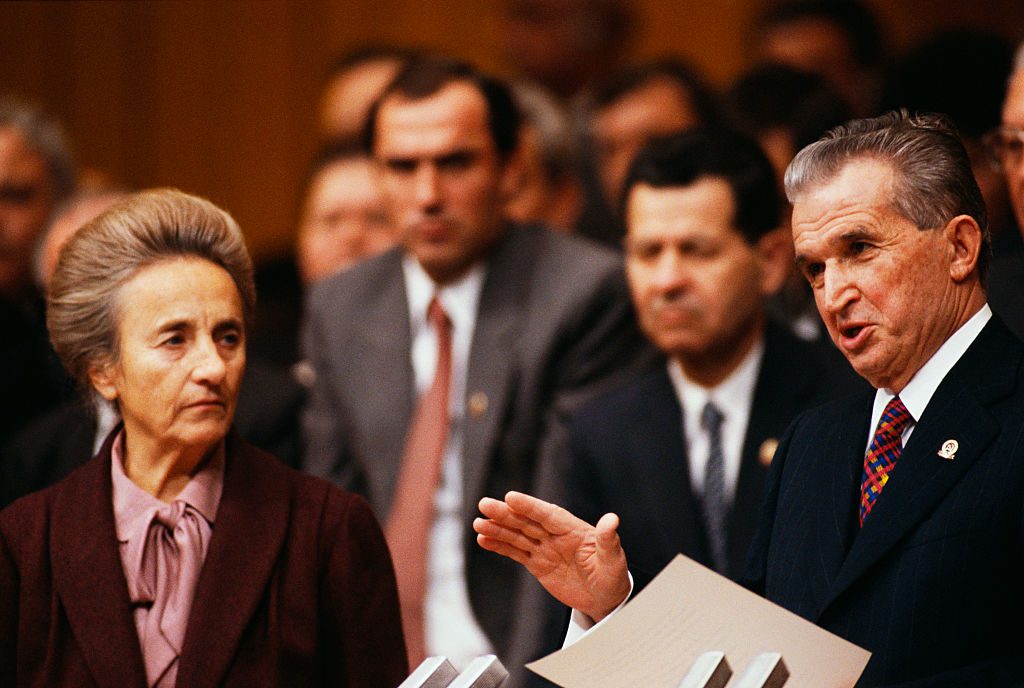
Nicolae Ceaușescu was the General Secretary of the Romanian Communist Party from 1965 To 1989, which is to say Romania’s head of everything. However, it would be inaccurate to give him all that credit – his wife, Elena, also worked her way up the party ranks on her own and the two worked to rule Romania with an iron fist together.
Inspired by the successes of Kim Il-Sung and Mao Zedong (still getting there), Ceaușescu tried to capture Romania with a cult of personality. Mass media control ensued in an attempt give the power couple a “strongman” + “Mother of the Nation” image, complete with the ineffable “don’t question our decision-making” package.
This ineffable decision making was lost on the international community however, as Ceaușescu’s name would be heard abroad after opposing Soviet intervention in Czechoslovakia, creating a rift with his Eastern bloc peers and depriving him of economic support he would soon sorely need.
On the homefront, the Ceaușescu’s continued to make error after error that would eventually see their downfall. Believing that more workers were needed for his plans for an industrious Romania, Ceaușescu abolished both birth control and abortions, prompting thousands of botched abortions and the orphans to match. As his country suffered from malnutrition, poverty, and the lowest standard of living in the Eastern bloc, Ceaușescu ordered the construction of a massive lavish palace, leveling much of Bucharest’s historic old district in the process.
When the Cold War started to wane, so too did the Ceaușescus’ power – they were the last hard-line communist leaders left in the bloc. Never as popular as they believed themselves to be, protests happened fast. After doing what all dictators do to protestors (shooting them), Nicolae held a speech on live TV that was quickly overtaken by boo’s and a security threat. The televised embarrassment immediately triggered a quick revolution (less than a day) and saw both Nicolae and Elena held in a show trial and executed on Christmas Day, 1989.

Ngo Dinh Diem – South Vietnam (1955 – 1963)
Yup, you read that right. South Vietnam.
Before the US got involved, but after the French left, Vietnam was split along the 17th Parallel the southern part of country was ruled by a Catholic Nationalist named Ngo Dinh Diem.
Part of the reason he is on this list is that much of America’s involvement in Vietnam was tied to his failures in leadership. When the Viet Minh defeated the French in 1954, part of the agreement of the during the Geneva accords was that there was supposed to be a nationwide referendum for a single unified Vietnamese government. Fearing that the more highly populated and more popular Ho Chi Minh’s communist north would win, Diem (with consent of the Americans) canceled the proposed referendum, declaring south Vietnam to be an independent capitalist republic.
Despite being popular at first because of his crackdown of Saigon crime syndicates, he saw his public appeal sink when it came to his land reforms – forcing farmers to locate to fortified hamlets alienated the rural population, prompting many to join the Vietcong.
Meanwhile in the cities, Buddhist unrest against Diem’s Catholic Nationalist agenda escalated to the point where monks set themselves on fire to gain the attention of the rest of the world.

Eventually in 1963, generals of the Vietnamese Army (encouraged by US President Kennedy) staged a coup and Diem was executed along with his brother. The political consequences allowed America to become more actively involved in the Vietnam war.
Kim Il-Sung and Park Chung-Hee – North and South Korea
Believe it or not, there was a time where the Korean Peninsula was ruled by not 1, but 2 dictators.
In the north: the well known Stalinist dictator Kim Il-Sung, who created a cult of personality so strong that it still rules to this day.
In the south: Park Chung-Hee, who in many ways was Il-Sung’s polar opposite, but certainly not when it came to erratic repressive violence. His highly conservative right-wing government imprisoned men for growing their hair long and women for having short skirts. Rigging elections and shutting down the press was also on his dictator’s resume. One day in 1971, his secret police even threw rival presidential candidate Kim Dae-jung into the ocean tied to a boat anchor (he lived, somehow).
There was a long history of intense rivalry between these two heads of state, so they often sanctioned hits on each other. One such event was the “Blue House Raid” of 1968. On January 21st a North Korean commando squad was sent in to raid Park’s personal residence with the intent of assassinating the president. The raid failed, but would serve as a permanent reminder to the south that the Korean DMZ doesn’t mean much to infiltrating commandos.
Out of all of the Cold War dictators, Kim Ill Sung’s legacy has lasted the longest and is the only one on this list to have lived through the Cold War in its entirety – leading North Korea with an Iron fist from 1946 to 1994, almost 50 years. His death held what is quite possibly the most hysterical (literally and figuratively) funeral ever to be observed. To this day he is still worshiped as the eternal president.
Park Chung-Hee, however, was not as successful in preserving his regime as he would be assassinated in a military coup in 1979. Soon after, the military junta that ruled South Korea was disbanded and the country turned towards democracy. To this day many credit Park with modernizing South Korea into the economic boom it is today. The irony is many fledgling rich states started out that way.
Furthering the irony is that both their children would continue their fathers’ legacy. Kim Il-Sung’s rule would be continued through his son (Kim Jong-Il) and then his grandson (Kim Jong-Un) who leads North Korea to this day. The south also had its own political nepotism, as in 2013 Park Chung-Hee’s daughter (Park Geun-Hye), would be elected South Korea’s first female president. However, in 2017 Geun-Hye he was impeached and arrested for corruption charges, for which she is currently serving a 20-year sentence. Sometimes you just can’t escape your father’s shadow, I guess.
Mao Zedong – China (1943 – 1976)
“When I see Mao, I see Stalin … a perfect copy”
– Nikita Khrushchev, Soviet Premier
Those were Khrushchev’s words after they first met, but Mao’s policies ended up arguably even more aggressive than Stalin’s. On top of changing the entire culture of a vast and ancient nation, Mao’s plans to turn China into an industrial superpower came at the cost of a recorded 80 million people, while some believe the count was even higher.
The were two moments to focus on: The Great Leap Forward and the Cultural Revolution. The Great Leap Forward was a policy where agricultural workers would be forced into giant communal farms. There they were to produce steel in makeshift smelters while simultaneously raising even greater harvests. What happened was a mass famine that proved to be the most devastating in human history. I could describe it all, but Simple History does a good job summarizing it up.
Mao’s status within the communist party had waned to figurehead status after the Great Leap Forward, but in 1968 Mao would launch a Cultural Revolution with the intent to purge China of what Mao believes is the old order. From teachers, artists, landlords all but abolishing private property, as well as everything that resembles the old feudal system. The great purge of entire culture and history so rapidly would inspire another even worse dictator…
Pol Pot – Cambodia (1976 – 1981)
Pol Pot was not the most well-known of rulers – he’s not even the most impactful compared to other dictators – but relative to the size of his country, Pol Pot was by far the most destructive.
Leading a guerilla army named the Khmer Rouge, he was unable to topple the government of Prince Sihanouk on his own. This changed in 1970 at the height of the American-Vietnam war when Prince Sihanouk was overthrown in a coup, which conveniently made way for a pro-American government to take over – allowing American forces to bomb and raid Cambodia in an attempt to cut off the Ho Chi Minh Trail.
The destruction of many towns and villages from these bombing rallied many to join Pol Pot’s forces. By 1975, around the same month Saigon fell, Pol’s rebels seized the Cambodian capital of Phnom Penh and immediately ordered the evacuation of the city’s inhabitants, forcibly moving the country’s population into agricultural communes.
The rest… is just dark history. If you want it told in a more visual manner, I’d recommend “The Killing Fields“, but it’s not going to be a fun watch.
Inspired by Mao’s Cultural Revolution, Pol Pot was a fundamentalist egalitarian who believed Cambodia would be better off regressing to an exclusively agricultural society. So, naturally, immediately upon seizing power he renamed the country “Kampuchea” after the old kingdom, and declared his first day to be “year zero”. The Khmer Rouge then proceeded to seize control of everyday life, allowing nothing to possessed by the individual – every minor possession was banned including money, books, western clothes, even western medicine. Anything that represented modern society was outlawed. Even modern tools were forbidden to perform their agricultural work.
This is the only kind of government on our list that was truly anti-intellectual, with those intellectuals being the first on the chopping block. Teachers, officials, in fact anyone with high level of education were all purged – even just wearing glasses would warrant a death sentence. Thousands more were imprisoned for various reasons, but really for just about anything that earned the ideological ire of the Khmer Rouge’s fundamentalist manifesto. In one infamous high school that was converted to a prison known as “S-21“, 20,000 prisoners were sent – only 7 survived.
Pol Pot’s dream of a complete agrarian socialist utopia would never materialize. His personal paranoia got the better of him as in 1979 Pol would launch a series of raids into Vietnam, fearing a Vietnamese conspiracy. In retaliation, Vietnam invaded Cambodia and handily won, forcing Pol Pot and his Khmer Rouge into the jungles once again. He died in 1994 of old age and in exile never answered for his humanitarian crimes.
Pol Pot was only in power for 4 years, but during that time his regime had killed an estimated 2 million people. Many were starved or exhausted over hard labor massive projects with no modern tools or engineering knowledge. Compared to our other dictator body counts, Pol Pot’s 2 million almost feels like rookie numbers. However, Cambodia was home to roughly 7.5 million souls in 1970.
2 million / 7.5 million.
That is over 1/4 of the total population… in just over 4 years. To put this in a perspective an American can understand: That’s high school. The duration of a Trump presidency. The lifespan of American secessionist Confederacy. 80 million Americans dead in the time it takes to get a bachelor’s degree.
So yeah, you may not have read his name in your particular history book. You may not have seen his face plastered on edgy T-shirts or street art. But as far as maximum damage inflicted to one’s own country goes, it’s hard to beat a 1/4+ chance of dying in a rice paddy for the ambitious dream of a madman.
